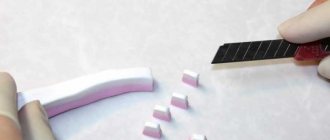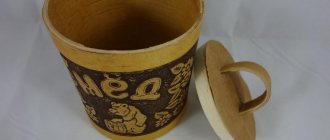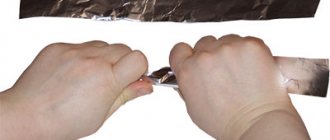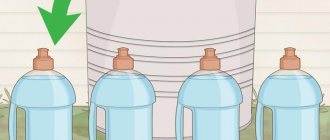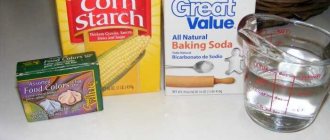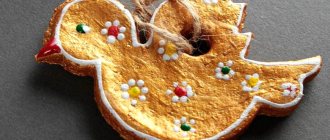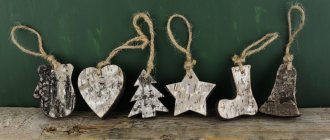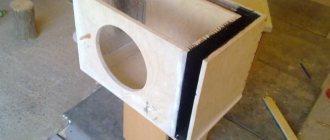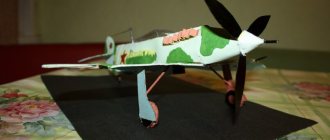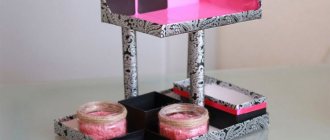Step-by-step instructions for making crafts from clay will help both adults and younger talents master the basics. In fact, learning how to sculpt the simplest crafts from polymer clay with your own hands is quite simple.
The main thing is to know the properties that the material has, to have the necessary tools, to study basic techniques and to know how to properly process this or that type of clay.
Tools
Before you start sculpting from polymer clay, you need to acquire the following tools:
- Cardboard crafts - 135 photos of useful and beautiful crafts for children and adults
Unusual crafts: we make cool and original things from scrap materials (120 photos and videos)
Beautiful crafts: examples of very stylish and unusual options for homemade crafts (125 photos)
- A small board made of plastic, plastic or glass.
- Stationery knife.
- Cutters are special shapes for cutting blanks of different geometric shapes.
- Pasta machine or roller for rolling out clay. A rolling pin will also work.
- Long needle or knitting needle.
- Stacks are a special set of tools for modeling.
- Emery cloth for polishing the surface of the finished product.
Depending on what will be manufactured, other tools or additional materials may be required.
Clay modeling preparatory group, details with photos
In the preparatory group, children begin to engage in plot and figurative modeling. One of these characters can be the Naf-Naf pig. To work you need clay, a board, toothpicks, watercolor or gouache.
Skinner Blend (smooth transition)
Allows you to make smooth gradient transitions from several colors. The technique itself is simple, but requires multiple repetitions of the procedure of rolling the workpiece in a pasta machine.
To create a gradient, triangular elements are cut out from clay of different colors. Then they are connected into a rectangle and rolled in a pasta machine.
During the process, the rolled out workpiece must be repeatedly folded in half (in one direction only) until the desired effect is achieved.
Watercolor technique
The watercolor sculpting technique is most often used to create beads. Rolled out pieces of clay of different colors are placed on top of each other, then rolled out and torn (that is, torn, not cut) into small pieces, which are randomly placed on the rolled out layer. The result is a kind of mosaic, which is then rolled to form an original abstract pattern.
Clay modeling senior group, step by step with photos
In kindergartens, toys are often made based on folk motifs. One of these is the Filimonov toy.
You will need clay, a board for work, a plastic knife, slip (make a cup out of clay and pour water into it, it will look like clay glue or slip), brushes and gouache.
We divide a piece of clay about the size of a medium carrot into three parts: the largest body, the medium one for the stand and the small one for the beard and comb. We form a cone from the largest one. The longer and thinner the cone, the slimmer the betta. Then bend the cone exactly in the middle at a ninety-degree angle. The thick part will be the tail. Bend the thin one again to form a head. We turn the tail part into a cake by squeezing it with our fingers. Next, roll a small piece into a ball and press it down to make a flat cake. Divide it in half and attach the resulting comb to the head lubricated with slip. We make a beard in the same way.
All that remains is to make a stand. Roll the clay into a cone. Insert the brush handle inside and start rolling it on the table. This technique will roll out the cone from the inside. Place a cockerel on it. Let it dry for about five days. Then we burn the toy and paint it.
Solyanaya
A fairly simple technique that is easy to master even for beginners. Also used to form beads of various round shapes.
Before sending the pieces for baking, they are coated in coarse salt and immersed in a vessel with water to obtain a textured pattern.
Mica Shift (mica-shift)
A technique that requires working with metallized polymer clay that contains mica. The plastic is rolled out and an extruded pattern is made on the workpiece using a stamp.
Then the upper part of the pattern is cut off so that the texture remains and baked. In the process, mica particles are displaced, forming a three-dimensional pattern.
Many craftsmen like to mix different techniques, making handicrafts from polymer clay with their own hands. As a result, amazing works come out that can be called masterpieces.
Methods for preparing plastic surgery at home
You can buy polymer clay in the store or make it yourself. The composition of the homemade version differs significantly from the purchased one, but in terms of its properties it will be no worse.
A special feature of plastic is its ability to dry out when opened, so it is important to store the ornamental material hermetically sealed in thick polyethylene.
There are many ways to prepare plastic mass at home. Here's one of the simplest:
Components:
- For 1 tbsp. l. regular Vaseline - 1 tbsp. l. any cream
- 250 grams cornstarch plus PVA, same amount
- Lemon juice - 2 tbsp. l.
- Polyethylene film
The cream will only be needed to lubricate the dishes in which all the other ingredients are mixed. The bowl is placed in the microwave at maximum, for 30 seconds.
The still warm mixture is carefully kneaded and wrapped in a cloth to remove excess water. Cooled material is ready for use.
You can use potato starch instead of corn starch. Or prepare a mass without heating based on three components:
- 200 grams of starch (any) plus the same amount of PVA
- Vaseline oil - 6 tsp.
Mix all components thoroughly until a plastic mass is obtained.
This cooking method is more suitable for beginners, although the clay hardens much faster than when the mixture is heated.
In order for the material to remain soft longer, during the work process you need to add any body or hand cream to the mass as a plasticizer.
Baking process
Baking can be done in a conventional electric oven. Before baking the product, you must read the instructions from the material manufacturer. To properly bake a craft, you need to know the temperature at which it will not lose its properties.
It’s also worth remembering right away that baking should only be done on a smooth, flat surface. Before baking the finished product, you can experiment with a piece of plastic.
When baking complex sculptures, it is better to do this in several stages. You should not put a large number of products in the oven at the same time, especially if they are of different sizes.
Roasting a snowman
- Firing is carried out at a temperature of about 120 degrees for 10 minutes.
- After cooling, the product is coated with a layer of varnish and dried.
We recommend reading:
- DIY paper orchid - a review of the best ideas and tips from craftswomen. Step-by-step instructions + master class (photo + video lessons)
- DIY paper hyacinth: the best master class for beginners with step-by-step instructions and diagrams from A to Z (130 photos)
- Paper stars - instructions on how to quickly and easily learn how to make beautiful stars with your own hands (100 photos of finished works)
Varnishing
Finished baked products require opening with varnish, especially some types of clay. There are two types of varnish coatings: matte and glossy.
For crafts made from polymer clay, there are special varnishes, which are usually produced by the same manufacturer. They adhere perfectly to the workpiece and retain their shine for a long time.
You can also use some varnishes for wood materials as a coating. They dry quickly, apply evenly to the surface, maintaining their original shine for a long time.
Some varnishes require reapplication to achieve the desired effect.
Usually the varnish is applied using a regular brush, but if the products are small in size, they can be processed by completely dipping them into liquid. This creates an even, high-quality coating in a matter of seconds.
How to quickly learn how to make clay crafts
How to make a craft from clay if you have no experience working with such materials? You should not immediately aim for any complex figures.
It’s better to start with something simpler, gradually complicating the process by alternating different techniques. An excellent option for beginners are small figures of simple shapes, for example, beads, hearts, fruits, berries, etc.
Youtube is a great resource with many clay sculpting channels.
The hosting offers simple training videos for beginners or master classes for more experienced craftsmen, and every person, regardless of their skill, will find exactly what they like.
Clay and its properties
Most often, two types of material are used. The first is natural, used for a long time. Extracted from soil rocks, it contains virtually no unnecessary additives. The colors are different:
- Bluish;
- Snow White;
- With a red tint.
The last option is the most common and valuable for lovers of hand sculpting. After being fired, such clay becomes very beautiful, acquiring a color similar to red brick. It gives a feeling of nobility and well-being.
Additional coloring is not required at all, unlike white clay. The high percentage of iron impurities makes this type of clay material resistant to thermal influences.
Crafts do not crack during kiln firing and do not dry out. The figurine will last for a long time due to its strength characteristics.
Before the processing process, the color of the clay is brownish. Additionally there is a hint of green. It is almost impossible to find and obtain such a breed on your own. It is considered a very rare natural phenomenon.
Blueish clay is also a rare case. The content of a large number of mineral elements makes it extremely beneficial for the skin of the hands.
But finding snow-white clay is not particularly difficult. It can be found everywhere. Having a dark gray hue, it becomes much lighter after processing, resembling ivory in color. Sold in briquettes. It must be cleaned before starting work. At the same time, everything unnecessary is removed - pebbles, spruce needles, etc.
When working with this breed, you need to acquire the necessary tools and a container for water. It is important to maintain certain proportions so that you do not end up with excess sand or water. In practice, the following ratio is used - 8 to 1 to 1. Clay makes up the largest part.
The polymer type of clay is intended for stucco molding of decorative products. The material is very similar to plasticine. It is based on the composition of polyvinyl chloride, to which plasticizers are added. Therefore, the modeling mass has the necessary plasticity and is heat-resistant.
Various colors of this material are available for sale. You can use transparent clay to which a phosphorus component is added. Products with shades of mother-of-pearl or metallic look impressive.
There are two types of further processing:
- Firing required;
- Hardening occurs naturally without heat treatment.
It is the polymer type that is recommended for those who are just starting their creativity.
